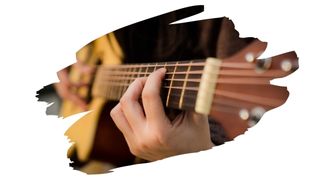There are a lot of great wood types for making the body of a guitar. But few are as lightweight as Paulownia wood.
But the weight of a wood type can have a significant impact on the tonal properties of a guitar. So what kind of sound quality can you expect to get out of Paulownia?
Well, in this post, you will find out exactly how light Paulownia wood is. You will also learn what kind of sound you can expect to get out of Paulownia wood.
And keep reading to discover why Paulownia wood is great for a guitar body, but not as a fretboard.

This post may contain affiliate links to products that we receive a commission for (at no additional cost to you). Learn more here.
What Is Paulownia Wood Usually Used For?
Well, this hardwood is actually one of the lightest types of lumber you can work with — besides Balsa and Cuipo wood.
Which is why Paulownia is used to make toy crafts and musical instruments. And thanks to its fine knot-free grain, it’s very easy to work with this lightweight lumber.
In fact, Paulownia is so light, that it is very buoyant. Which is why it is often used to make kayaks and surfboards.
To put into perspective how light this wood is, let’s compare it to Maple.
Hard Maple has an average dried weight, (i.e. the weight of this wood once it has been seasoned), of 44 pounds per cubic foot. While Paulownia wood has an average dried weight of just 18 pounds per cubic foot.
Related Post: How To Season Wood (7 Tips)
If Paulownia Wood Is Used To Make Surfboards, Does That Mean It’s Waterproof?
This lumber is not waterproof, but for a type of wood, it is fairly impermeable to water.
You see, wood is a hygroscopic material. What this scientific term means is that solid wood is fantastic at absorbing water and moisture.
For example, a mist of water vapor can get easily drawn down into the pores of most natural wooden surfaces.
But, when it comes to Paulownia wood, it isn’t super-absorbent the way most other woods species are. Instead, Paulownia wood soaks up very little water.
And this is the main reason why Paulownia wood doesn’t succumb to warping or wood rot easily.
Related Post: What To Do When Solid Wood Cabinet Doors Start Warping (Solved!)
So Is There Any Real Disadvantage To Using Paulownia Wood?
When it comes to guitars, the biggest disadvantage to using Paulownia wood is denting.
Paulownia is very light, thanks to its low density. But, the softness of this wood also means that it can dent all too easily.
The slightest bump will crush the wood fibers of Paulownia, causing dings and scratches.
OK, Then Why Is Paulownia A Good Guitar Wood?
Mostly, it comes down to how light this wood type is.
It also doesn’t twist and warp in humid conditions (the way other guitar wood types can). And it is easy to craft into any kind of design you have your heart set on.
So, if you want to make an elaborately-designed guitar, then this is a good choice wood. However, despite its great strength-to-weight ratio, Paulownia is far from one of the toughest wood types around.
If you were to press down hard on a thin Paulownia fretboard, you’d likely snap it in two. Which is why Paulownia is no good for making the fretboard or neck of your guitar.
But Isn’t Paulownia Wood Strong?
Compared to it’s weight, it is. But, compared to other wood species, it is not.
The compressional strength of Paulownia wood is very low when you pit it against other guitar woods, such as Maple.
To clarify, the compressional strength of wood reflects how well that wood can resist crushing compressional stress.

And one way we measure the compressional strength of wood, is by looking at its Janka rating. The Janka rating measures the pounds of force it takes to dent a piece of wood.
Paulownia wood has a Janka rating of 300 lbf. Which means that it takes just 300 pounds of force to crush the wood fibers of this timber.
On the other hand, a wood type such as Hard Maple has a Janka rating of 1450 lbf. And this makes Hard Maple nearly five times harder than Paulownia.
Related Post: Why Should You Use Sapele (Vs Maple) For Your Guitar Fretboard?
Got It…So How Does It Sound? Is Paulownia A Good Tone Wood?
Well, first off, when it comes to sound quality, wood type can have an impact on the sound of acoustic guitars. But, wood type has zero impact when it comes to electric guitars.
So, if you’re using Paulownia wood for an electric guitar, then the tonal properties of Paulownia isn’t noticeable. However, with acoustic guitars, the density of the wood used to make the body, can have an effect on the tone.
Lightweight and relatively low-density wood types, such as Basswood and Paulownia, can produce warm tones at mid-range frequencies.
But, Paulownia doesn’t have good sustain. Especially since you won’t get as much resonance as you’d like out of this lightweight hardwood.
To Wrap Up, Here Are The 3 Key Takeaways From This Post…
- 1). Paulownia is one of the lightest wood types around.
- 2). Paulownia dents easily. And it is nearly five times softer than Hard Maple.
- 3). Paulownia is great for making the body of a guitar. But, it is not suitable for making fretboards or guitar necks.
References:
Ab Latib, H., Choon Liat, L., Ratnasingam, J., Law, E. L., Abdul Azim, A. A., Mariapan, M., and Natkuncaran, J. (2020). “Suitability of paulownia wood from Malaysia for furniture application” BioRes. 15(3), 4727-4737.



